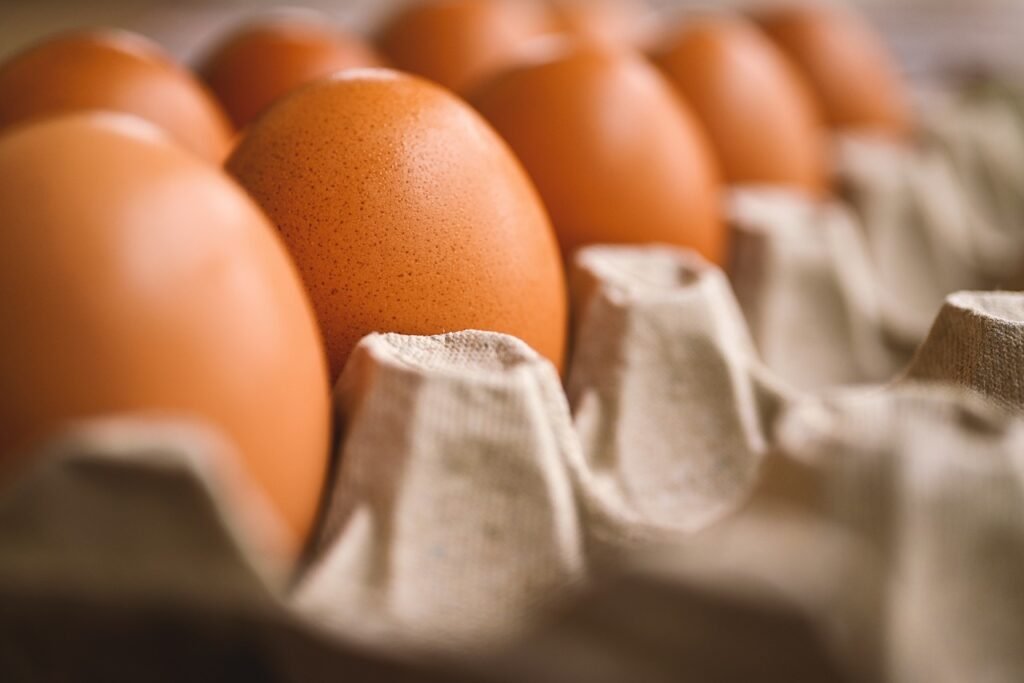Broccoli Growing Guide From Seed To Harvest To Health Benefits
.jpg)
Are you looking to add a nutritious and delicious vegetable to your garden? Look no further than broccoli!
This guide will take you through everything you need to know about growing broccoli, from choosing the right location to caring for your plants. We will also explore the health benefits of broccoli, including its nutrient-rich profile and potential cancer-fighting properties.
Additionally, we’ll share some tips on how to store, prepare, and cook broccoli to enjoy its flavorful goodness. Get ready to become a broccoli-growing expert!
What is Broccoli?
Broccoli, a cruciferous vegetable, is a powerhouse of essential nutrients, vitamins, and minerals, making it a vital component of a healthy diet.
Known for its rich content of vitamin C, fiber, and antioxidants, broccoli provides numerous health benefits, such as supporting immune function, promoting healthy digestion, and reducing inflammation. This versatile vegetable can be enjoyed raw in salads, steamed as a side dish, or roasted with olive oil for a flavorful twist. Whether grown in a home garden or purchased at a local market, broccoli is a great addition to any meal, offering a delicious way to boost your overall nutrition.
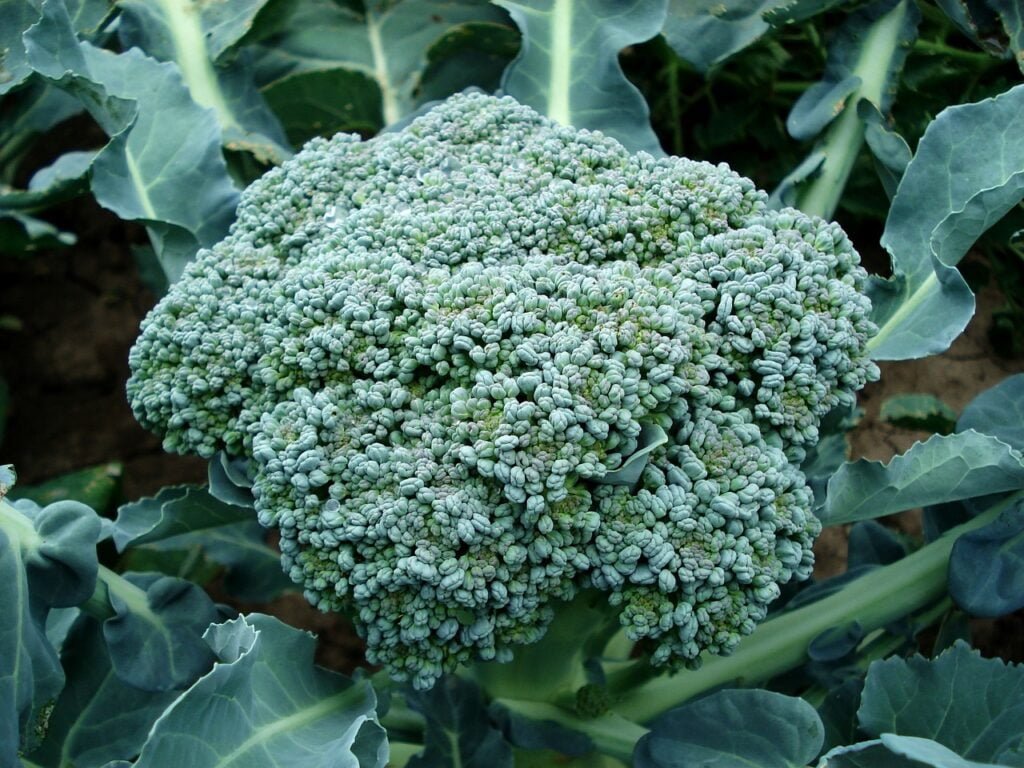
How to Grow Broccoli?
Growing broccoli successfully requires careful attention to planting, cultivation, and pest management techniques to ensure a bountiful harvest of this nutritious vegetable.
Choosing the Right Location
Selecting a suitable location for your broccoli plants is crucial, ensuring they receive ample sunlight and proper conditions for optimal growth.
- Broccoli plants thrive when they receive at least six hours of sunlight per day, making it essential to choose a spot with direct sun exposure.
- When opting for container gardening, place your pots in areas with unobstructed sunlight, such as balconies, windowsills, or patios.
- Positioning the containers facing south or west can help maximize sunlight absorption.
- Be mindful of potential shade from nearby buildings or trees that could limit light exposure.
- Adequate sunlight is vital for the process of photosynthesis, which is crucial for the growth and development of your broccoli plants.
Preparing the Soil
Preparing nutrient-rich soil is essential for the successful cultivation of broccoli, incorporating organic matter and mulching to promote healthy growth.
Organic soil preparation for broccoli involves starting with well-draining soil that is rich in organic matter such as compost or aged manure. These additions provide essential nutrients like nitrogen, phosphorus, and potassium, which are crucial for healthy plant development.
To further enhance the soil quality, consider adding bone meal or fish emulsion for a boost of calcium and other micronutrients. Mulching around the base of the broccoli plants helps to retain moisture, suppress weeds, and maintain a consistent soil temperature, creating optimal growing conditions for your crops.
Choosing A Broccoli Variety
When it comes to growing your own broccoli, selecting the right variety is crucial for a successful harvest. Broccoli, a cool-season crop, thrives in spring and fall, but the key to a bountiful yield lies in choosing a variety that suits your climate and taste preferences. Among the plethora of options, three types stand out: Calabrese, Sprouting, and Romanesco.
Calabrese, named after its Italian region of origin, is the most familiar variety, producing large, green heads and multiple side shoots that can be harvested over time. This variety is ideal for those looking for a classic broccoli experience, with its dense, flavorful florets.
For gardeners interested in a more visually appealing and slightly more exotic option, Romanesco is a fascinating choice. With its vibrant, fractal-patterned spirals and a nuttier, slightly sweeter flavor than traditional broccoli, Romanesco adds a touch of elegance and complexity to dishes.
Sprouting broccoli, including both purple and white varieties, offers smaller heads and an abundance of shoots. This type is perfect for continuous harvesting, providing a steady supply of broccoli without the need for a large growing space.
Each variety has its unique growth habits, flavors, and nutritional profiles, making the choice of which to grow an exciting decision for any gardener. By considering your local climate, garden space, and culinary preferences, you can select the broccoli variety that will thrive in your garden and on your table.

Planting Broccoli Seeds
Planting broccoli seeds at the right time and considering companion planting options can enhance the growth and resilience of your broccoli plants.
Broccoli seeds should ideally be sown indoors about 6-8 weeks before the last frost date in your region. Once the seedlings are a few inches tall and have developed a couple of true leaves, they can be transplanted outdoors into well-draining soil with plenty of sunlight. When it comes to companion planting, you may consider pairing broccoli with plants like marigolds to deter pests or planting aromatic herbs like basil to attract beneficial insects. This natural approach can help control pests and promote healthier growth in your broccoli patch.
Caring for Broccoli Plants
Providing proper care to broccoli plants involves spacing them adequately, pruning damaged parts, and fertilizing them to support robust growth and development.
The spacing requirements for broccoli plants are crucial as they need sufficient room to grow and thrive. It is recommended to leave around 18-24 inches between each plant to allow proper airflow and prevent overcrowding.
When it comes to pruning, regularly inspect the plants for any yellowing or diseased leaves and promptly remove them to encourage new growth. Consider applying a balanced fertilizer rich in nitrogen every 3-4 weeks to ensure the plants receive essential nutrients for healthy development.
How Long Does It Take for Broccoli to Grow?
Broccoli typically takes around 60-90 days to reach maturity, with factors like planting season and care influencing the growth duration.
The growth of broccoli starts with the planting process. Once the seeds are sown, broccoli plants begin a journey marked by various stages of growth. Factors such as temperature, sunlight exposure, soil quality, and adequate watering play vital roles in determining how quickly the broccoli matures. Regular monitoring of these factors is crucial to ensure that the plants receive the ideal conditions for steady growth. By closely observing the development of the broccoli plants, adjustments can be made to address any issues that may arise, ultimately leading to a successful and timely harvest.
When is the Best Time to Harvest Broccoli?
Harvesting broccoli at the right time, when the florets are firm and compact, ensures optimal taste and nutritional value for your harvested produce.
To determine the best time for harvesting, monitor the size and color of the florets. Look for vibrant green florets that are tightly closed, indicating peak readiness. Delaying harvest can lead to yellowing or flowering of the florets, compromising taste and quality.
Once harvested, store broccoli in a perforated plastic bag in the refrigerator crisper drawer. Avoid washing the broccoli before storage as excess moisture can promote spoilage. Properly stored broccoli can maintain its freshness for up to a week, ensuring you enjoy the best flavor and nutrients from your harvest.
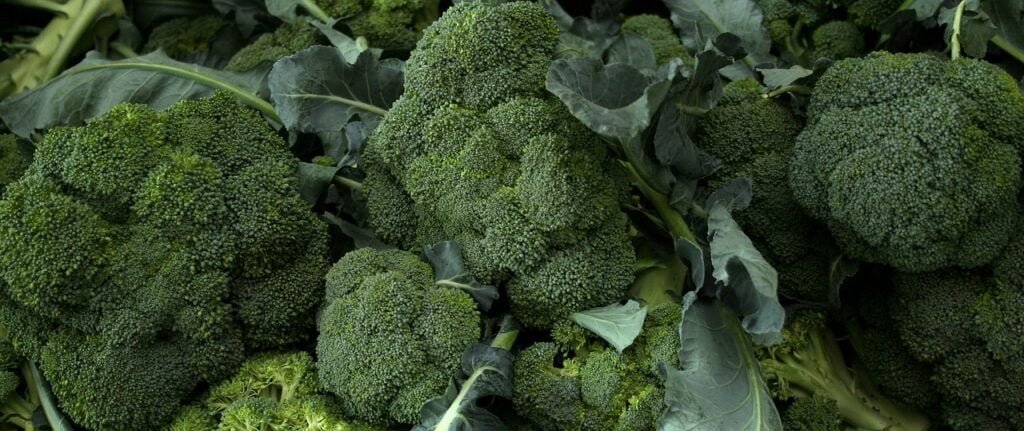
What are the Health Benefits of Broccoli?
Broccoli offers a myriad of health benefits, being rich in essential vitamins, minerals, and antioxidants that support overall well-being and disease prevention.
Rich in Nutrients
Broccoli is a nutritional powerhouse, packed with fiber, protein, vitamins such as C and K, and essential minerals like calcium and iron.
In addition to its impressive nutritional profile, broccoli is also rich in antioxidants that help protect cells from damage and support overall health. The fiber content in broccoli aids in digestion and promotes a healthy gut, while the protein content contributes to muscle growth and repair. This versatile vegetable is a good source of folate, potassium, and manganese, which are vital for various bodily functions. Including broccoli in your diet can help boost your immune system and promote optimal health and well-being.
May Help Prevent Certain Cancers
Broccoli’s potent antioxidants and anti-inflammatory properties may play a role in reducing the risk of certain cancers, making it a valuable addition to a cancer-preventive diet.
Research suggests that the compounds found in broccoli, such as sulforaphane and indole-3-carbinol, can help combat oxidative stress and inflammatory processes in the body, both of which are linked to cancer development. By neutralizing harmful free radicals and reducing chronic inflammation, broccoli supports the body’s defense mechanisms against cancerous cell growth. Including broccoli in a balanced diet rich in colorful fruits and vegetables can provide a natural boost to the body’s ability to ward off cancer and promote overall health.
Supports Heart Health
Broccoli’s high folate content and nutrient profile contribute to heart health by supporting healthy blood circulation and reducing the risk of cardiovascular diseases.
Folate, a B vitamin found abundantly in broccoli, plays a crucial role in maintaining optimal heart function by helping to regulate homocysteine levels in the blood. Elevated homocysteine levels are associated with an increased risk of heart disease and stroke. The antioxidants present in broccoli, such as vitamin C and beta-carotene, help protect the heart from oxidative stress and inflammation.
Including broccoli in a heart-healthy diet can provide a range of essential nutrients that support overall cardiovascular health and reduce the risk of heart-related issues.
Aids in Digestion
The fiber and nutrients in broccoli aid digestion by promoting gut health, supporting regular bowel movements, and enhancing overall digestive function.
Rich in fiber, broccoli plays a crucial role in maintaining a healthy digestive system. The high fiber content in broccoli assists in the smooth movement of food through the digestive tract, preventing constipation and promoting regularity. The presence of fiber helps in feeding the beneficial bacteria in the gut, leading to a balanced and thriving gut microbiome. This, in turn, can improve nutrient absorption and support overall gastrointestinal health. With its combination of fiber and essential nutrients, broccoli stands as a powerful ally in keeping your digestive system running smoothly.
May Help Improve Skin Health
Broccoli’s rich vitamin C content and antioxidants may contribute to improved skin health by protecting against oxidative damage and promoting collagen production.
Vitamin C in broccoli plays a crucial role in skin protection, as it helps neutralize free radicals that can damage skin cells and lead to premature aging. The antioxidants in broccoli also aid in reducing inflammation and promoting skin rejuvenation, resulting in a more youthful and radiant complexion. Incorporating broccoli into your diet or skincare routine can provide long-term benefits for maintaining healthy and glowing skin.
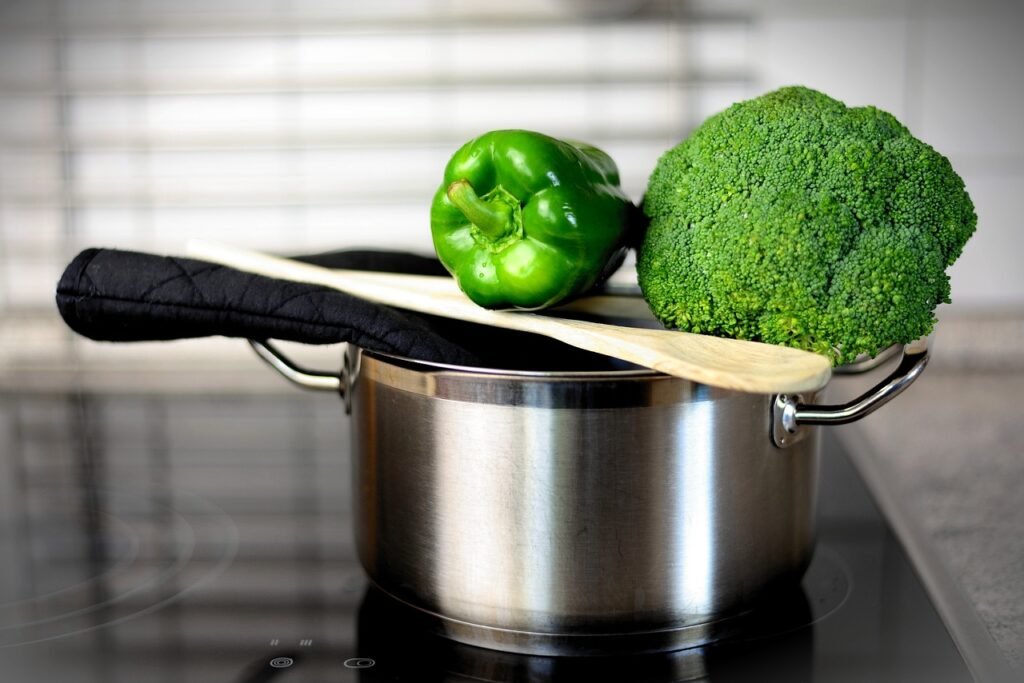
How to Store Broccoli?
Properly storing broccoli in the refrigerator, whether fresh or blanched for preservation, helps extend its shelf life and retain its nutritional value for later use.
To store fresh broccoli, trim the stem ends and place the heads in a perforated plastic bag in the vegetable crisper. Remember to keep it unwashed to prevent moisture buildup.
If blanching before storage, quickly submerge the florets in boiling water for a couple of minutes, followed by an ice water bath to stop the cooking process. Once blanched, pat them dry before freezing in airtight containers.
When reheating, consider steaming or microwaving to preserve the nutrients. By following these simple steps, you can enjoy fresh and nutritious broccoli for an extended period.
How to Prepare and Cook Broccoli?
Preparing and cooking broccoli offers a range of culinary possibilities, from simple steaming and roasting to flavorful stir-fries and creative recipes that showcase its versatility.
Steaming
Steaming broccoli is a quick and healthy cooking method that helps retain its vitamins and nutrients while preserving its vibrant color and crunchy texture.
- To steam broccoli, simply place a steamer basket over a pot of simmering water and arrange the florets in a single layer.
- Cover and steam for about 5-7 minutes until the broccoli is tender-crisp.
- This gentle cooking process not only locks in the health benefits of broccoli, such as its high levels of vitamin C and fiber, but also helps maintain its firmness.
To enhance the flavor, you can add a sprinkle of garlic powder, lemon zest, or a drizzle of olive oil before steaming. These additions complement the natural sweetness of the broccoli and elevate its taste profile while ensuring you get the most nutritional value out of this versatile vegetable.
Roasting
Roasting broccoli imparts a delicious flavor and caramelization to the vegetable, enhancing its taste profile with seasonings, herbs, and spices for a delightful culinary experience.
By roasting broccoli at a high temperature of around 400°F (200°C), the vegetable achieves a perfect balance of crispiness and tenderness. The cooking time may vary between 20-25 minutes, depending on the desired level of doneness. To enhance the flavor further, consider drizzling olive oil, sprinkling garlic powder, red pepper flakes, or parmesan cheese before placing it in the oven. Experimenting with different combinations of seasonings can elevate the taste to new levels, making this roasted broccoli dish a versatile and crowd-pleasing side or main course option.
Stir-Frying
Stir-frying broccoli with other vegetables, proteins, and sauces creates a vibrant and flavorful dish with a delightful crunch, making it a popular cooking method for quick and tasty meals.
The key to a successful stir-fry lies in the technique used – high heat and constant tossing ensure that the ingredients cook quickly while maintaining their texture and color.
Broccoli’s earthy flavor pairs well with garlic, ginger, soy sauce, and oyster sauce, creating a harmonious blend of savory and umami notes.
Experimenting with different combinations such as adding tofu, shrimp, or beef can elevate the dish, offering a variety of textures and flavors for a satisfying meal.
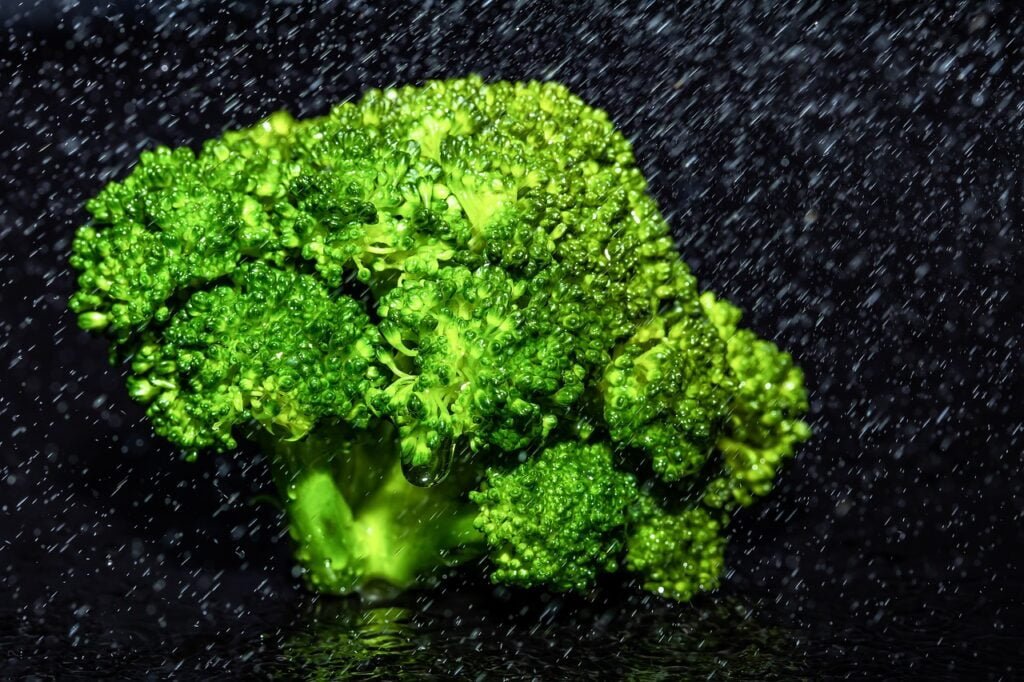
Blending into Soups or Smoothies
Incorporating broccoli into soups or smoothies adds a nutritious boost to your meals, blending its vibrant flavor and health benefits into delightful and wholesome creations.
Broccoli’s versatility shines through in soups, where it can be pureed for a creamy texture or added as hearty chunksfor a satisfying bite. For smoothies, the mild taste of broccoli pairs beautifully with sweet fruits like mango or pineapple, creating a refreshing and nutritious drink. Experiment with adding spices like cumin or turmeric to soups to enhance the flavors, or blend in some Greek yogurt for a creamy smoothie.
Whether you prefer a warm bowl of broccoli soup on a chilly day or a revitalizing broccoli smoothie after a workout, there are endless ways to enjoy this nutrient-packed vegetable.
Broccoli Growing Guide Wrap Up
In conclusion, growing your own broccoli offers not only a rewarding gardening experience but also a chance to enjoy fresh, nutritious produce right from your backyard. Whether you’re drawn to the classic Calabrese, the intriguing Romanesco, or the versatile Sprouting varieties, there’s a broccoli type to suit every taste and garden.
We encourage you to dive deeper into the world of vegetable gardening by exploring more on our blog, where you’ll find comprehensive guides on growing various vegetables. Don’t forget to subscribe to our newsletter for the latest gardening tips, tricks, and insights. Start your journey to a greener, healthier lifestyle with us today and discover the joys of homegrown goodness.
Frequently Asked Questions
An A-Z Broccoli Growing Guide is a comprehensive guide that covers every step of growing broccoli, from planting seeds to harvesting the mature vegetable. It includes information on soil preparation, watering, fertilizing, pest control, and more.
To start growing broccoli from seeds, plant the seeds in a seed tray or small pots filled with potting soil. Keep the soil moist and place the tray or pots in a warm, sunny location. Once the seedlings have sprouted, they can be transplanted into the garden.
The best time to harvest broccoli is when the head is firm and dark green in color. It should be about 6-8 inches in diameter. If the head starts to turn yellow, it is overripe and should be harvested immediately.
Broccoli is a nutrient-dense vegetable that is high in vitamins, minerals, and fiber. It is known for its anti-inflammatory and cancer-fighting properties, and is also a good source of antioxidants.
To store harvested broccoli, wrap the heads in a damp paper towel and place them in a plastic bag in the refrigerator. They can last for up to 5 days. If you want to freeze broccoli, blanch it first and then store it in an airtight container in the freezer.
Yes, broccoli plants are susceptible to pests such as aphids, cabbage worms, and cutworms. They can also be affected by diseases such as black rot and clubroot. Proper pest control measures and good gardening practices can help prevent these issues.



